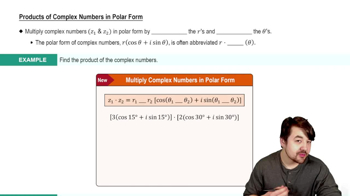Textbook Question
Work each problem.
Consider each angle in standard position having the given radian measure. In what quadrant does the terminal side lie?
3
613
views
 Verified step by step guidance
Verified step by step guidance Verified video answer for a similar problem:
Verified video answer for a similar problem:


 3:35m
3:35mMaster Intro to Complementary & Supplementary Angles with a bite sized video explanation from Patrick
Start learning